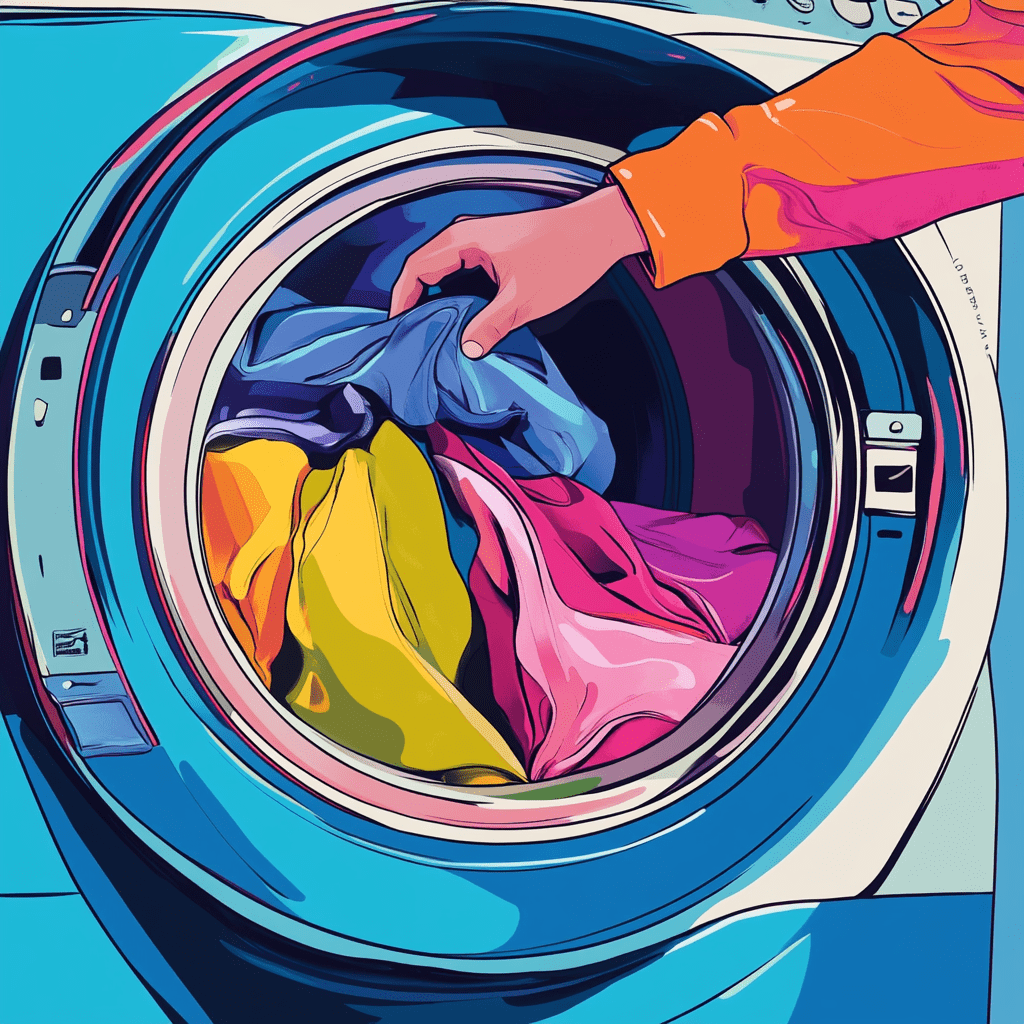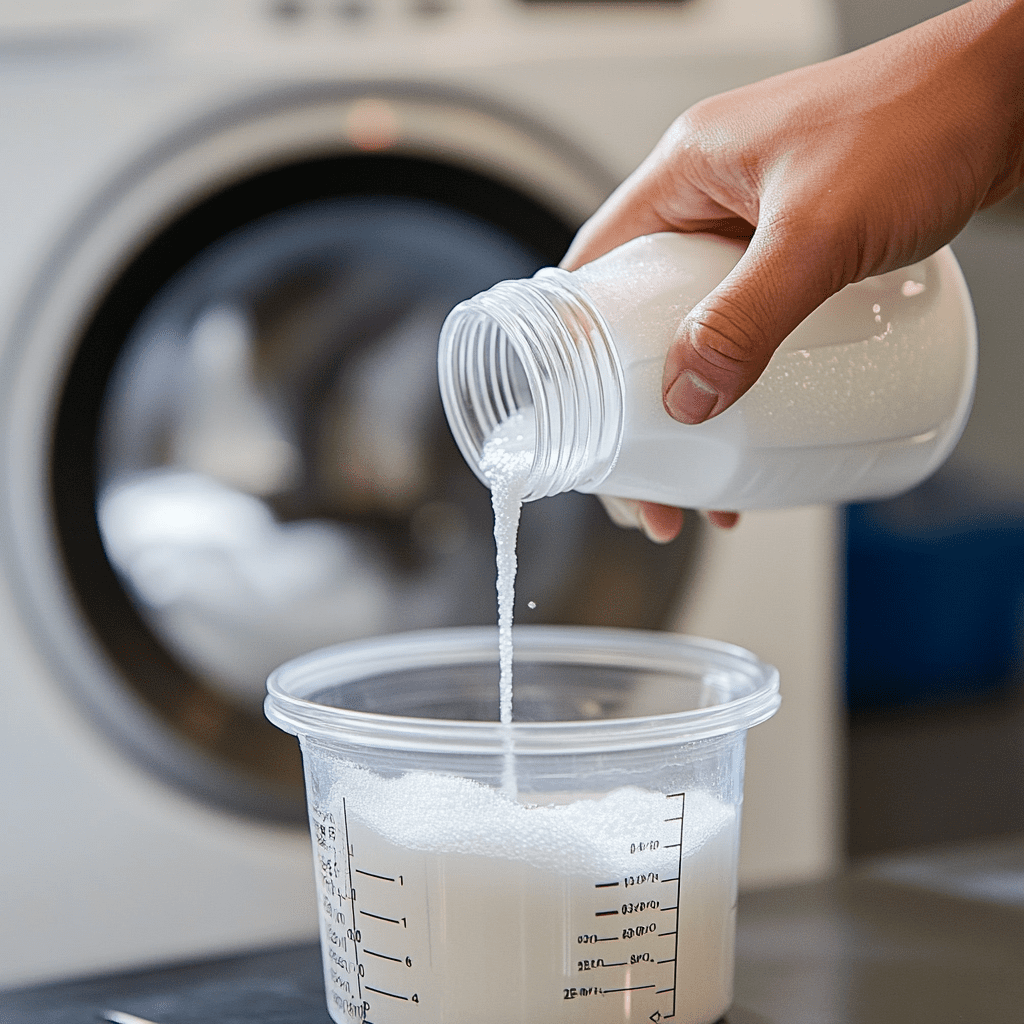Ah, laundry. The chore we all love to hate. You’d think by now we’d have it down to a science, right? Wrong. It turns out, many of us are unknowingly committing laundry crimes that would make our clothes cry if they could. But fear not, we’re about to air out some dirty laundry myths that might just save your favorite threads from an untimely demise.
More Suds, More Problems
You know that satisfying moment when you dump a generous glob of detergent into your washer, imagining all that soapy goodness obliterating every speck of dirt? Well, hold onto your laundry detergent, folks, because we’re about to burst that bubble. Using more detergent doesn’t equal cleaner clothes. In fact, it’s quite the opposite!
Excess detergent can actually leave a residue on your clothes, attracting more dirt and bacteria. It’s like hanging a “Welcome” sign for grime. Plus, it can strain your washing machine’s pump and drain system, potentially leading to a sudsy breakdown. Stick to the recommended amount, and your clothes (and wallet) will thank you.
Hot Water: The Not-So-Hot Truth

Remember when your grandma told you that scalding hot water was the key to spotless laundry? Well, it turns out Grandma might have been a bit off the mark on this one. While hot water can be great for certain items, it’s not the universal solution we once thought it was.
Hot water can actually set certain stains, making them permanent residents on your favorite shirt. It can also cause shrinkage, fading, and damage to delicate fabrics. So unless you’re trying to create a wardrobe for your pet chihuahua, stick to cold water for most of your laundry. It’s gentler on your clothes, your energy bill, and the environment. Talk about a win-win-win!
The Great Dryer Sheet Debacle
Ahh, the smell of fresh laundry, courtesy of those magical dryer sheets. But before you toss in a handful for extra freshness, let’s talk about why that might not be the best idea. Overusing dryer sheets is like dousing yourself in perfume before a first date – a little goes a long way, and too much can be a real turn-off.
Excessive use of dryer sheets can leave a waxy buildup on your clothes and in your dryer, reducing its efficiency. Plus, many conventional dryer sheets contain chemicals that can irritate sensitive skin. Instead, try wool dryer balls. They’re reusable, eco-friendly, and won’t leave you smelling like a walking air freshener.
The “Wash After Every Wear” Fallacy
If you’re the type who tosses everything into the laundry basket after one wear, you might want to sit down for this one. Not every item needs to be washed after each use. In fact, overwashing can lead to premature wear and tear, fading, and a general sense of sadness emanating from your closet.
Items like jeans, sweaters, and jackets can often go several wears before needing a wash, unless you’ve been rolling around in mud or sweating profusely. Give your clothes (and your washing machine) a break. Bonus: you’ll save water and energy, making Mother Nature and your utility bill very happy.
The Overstuffed Washer Syndrome

We’ve all been there – facing a mountain of laundry and thinking, “I can totally fit all of this in one load.” But cramming your washer fuller than a Thanksgiving turkey is a recipe for disaster. Not only does it prevent your clothes from getting properly clean, but it can also damage both your clothes and your washing machine.
Overloading can cause clothes to rub against each other excessively, leading to pilling and fabric damage. It can also strain your washer’s motor, potentially leading to costly repairs. Give your clothes some room to groove in there. They need space to move around and get properly clean. Remember, less is more when it comes to load size.
The Label Laziness Epidemic
Let’s be honest, those tiny tags with even tinier writing aren’t exactly a thrilling read. But ignoring them is like skipping the instruction manual when assembling IKEA furniture – you might end up with a disaster on your hands (or in this case, on your body).
Each fabric has its own needs, much like a temperamental houseplant. Washing delicates in a regular cycle or drying certain materials at high heat can lead to shrinking, color fading, and fabric distortion. Take a moment to decipher those hieroglyphics on the label. Your clothes will last longer, and you’ll avoid the dreaded “how did my favorite shirt become doll-sized” moment.
The One-Size-Fits-All Stain Treatment
Stains happen to the best of us. Whether it’s an enthusiastic spaghetti dinner or an encounter with a leaky pen, dealing with stains is part of the laundry game. But here’s where many of us go wrong: treating all stains the same way.
Different stains require different treatments. Using the wrong method can actually set the stain, making it a permanent feature of your garment. For instance, protein-based stains like blood need cold water, while oil-based stains might need a bit of dish soap. And forget about using hairspray on ink stains – that’s so last century (and can make the stain worse). Do a quick Google search before tackling that stubborn spot. Your clothes will thank you for the personalized care.
The Fabric Softener Fallacy

Fabric softener sounds like a dream come true. Who doesn’t want soft, fresh-smelling clothes? But before you pour that liquid gold into every wash, let’s talk about why it might be doing more harm than good.
Fabric softeners work by coating fibers with a thin layer of chemicals. This can reduce the absorbency of towels and moisture-wicking properties of workout gear. It can also build up over time, leading to dull, grimy-looking clothes. Plus, many people find that fabric softeners irritate their skin. If you’re addicted to that soft feel, try adding a cup of white vinegar to the rinse cycle. It softens clothes naturally without the drawbacks of commercial softeners.
The Sorting Shortcut Snafu
We’ve all been there – faced with a mountain of laundry and the temptation to just throw it all in together. After all, sorting is for Type A personalities and people with too much time on their hands, right? Wrong! Skipping the sorting step is like mixing all your foods together at a buffet – it might save time, but the results are less than appetizing.
Sorting isn’t just about separating lights and darks. It’s also about grouping similar fabrics and weights together. Washing heavy jeans with delicate blouses is a recipe for disaster. Not only can the colors bleed, but the heavier items can actually damage more delicate fabrics. Take a few extra minutes to sort your laundry properly. Your clothes will last longer, and you’ll avoid the dreaded pink-tinged-formerly-white-shirt syndrome.
The Button-Up Blunder
Here’s a twist for you: contrary to popular belief, buttoning up your shirts before washing them isn’t always the best move. In fact, it can lead to some unexpected laundry casualties.
Buttoning up shirts before washing can actually cause the buttonholes to stretch out and the buttons to potentially pop off during the wash cycle. Instead, unbutton your shirts and turn them inside out before washing. This protects the buttons and the outer fabric, keeping your shirts looking crisp and put-together for longer. Who knew unbuttoning could be so beneficial?
The Drying Dilemma
Ah, the dryer – that magical box that transforms damp, wrinkled clothes into warm, fluffy goodness. But before you toss everything into the dryer on high heat, let’s talk about why that might not be the best idea for all your clothes.
High heat can be harsh on fabrics, leading to shrinkage, fading, and general wear and tear. Many items, like sweaters and delicates, are better off air-drying. For items that do go in the dryer, use the lowest heat setting possible. It might take a bit longer, but your clothes will thank you by staying in shape and lasting longer. Plus, you’ll save energy, which is always a win.
The “Clean Enough” Conundrum
Last but not least, let’s address the elephant in the room – or should I say, the bacteria in your “clean” laundry. Just because your clothes look clean doesn’t mean they’re free from invisible nasties.
Believe it or not, about 70% of the soil on your clothes is invisible. This includes body oils, dead skin cells, and bacteria. To truly get your clothes clean, make sure you’re using enough water (remember, don’t overload!), the right amount of detergent, and an appropriate wash cycle. And for items like towels and bedding, an occasional hot water wash can help kill bacteria and dust mites.
